How to Winterize Asparagus Plants
INSIDE : Learn how to winterize Asparagus Plants to promote healthy roots and stronger crowns in the next growing season!
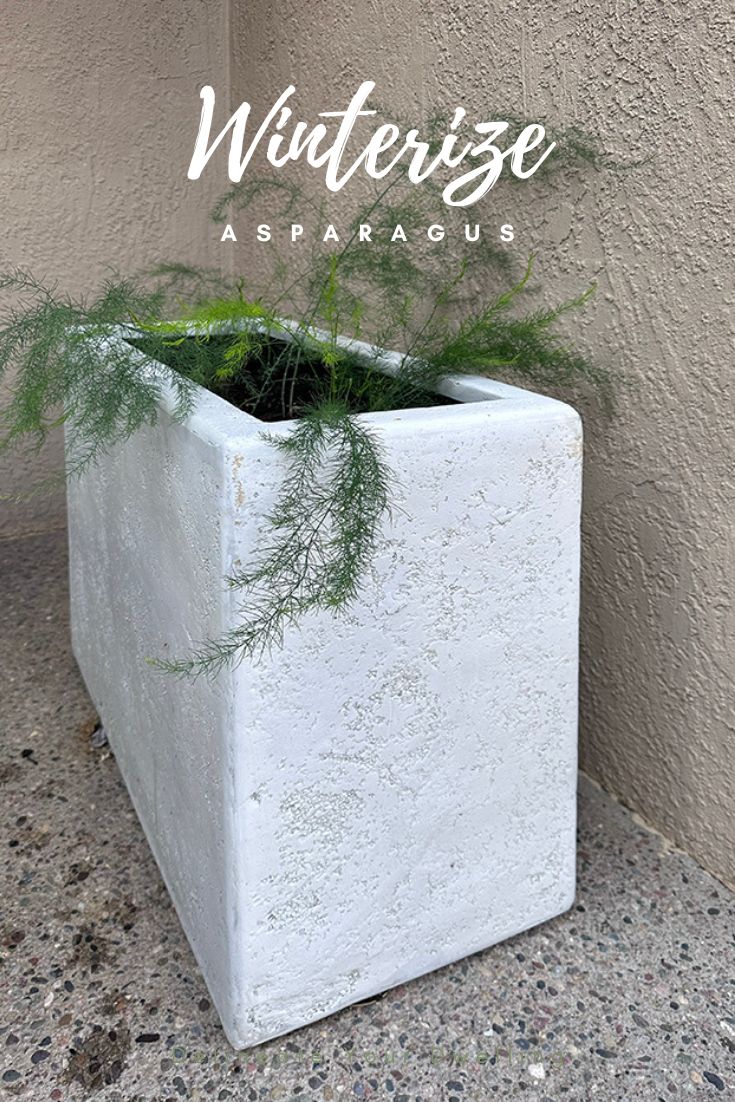
Growing vegetables is one of the most rewarding things you can do with your outdoor spaces. I talk all about creating a Simple Raised Vegetable Garden, the best Small Garden Compost Bins and even How to Grow Zucchini in pots here.
Shortly, I will be sharing a post all about growing Asparagus in a container. You can clearly see from this post that I started potted asparagus this summer. They are doing wonderfully, but I want to get a full growing season in before I write that post.
Asparagus Vegetable Plants
Growing asparagus isn’t difficult, but there are certainly some important things to know before beginning. Asparagus plants can grow up to 20+ years if given the right care and nutrients, so having a dedicated space or container for your plant is essential. You can read more about growing asparagus in containers in my upcoming post here.
Since asparagus plants have ample longevity, once established taking care of them year round is very important.
Winterizing your asparagus plants protects the roots from the cold and also encourages them to go dormant, so they can rest before beginning the next productive growth period in Spring.
Cutting back Asparagus Fronds in the Fall
There are a couple important things to remember as the weather starts to cool for your asparagus plants. They are perennial plants meaning they come back each year, so protecting them from the cold temperatures that could damage them is key.
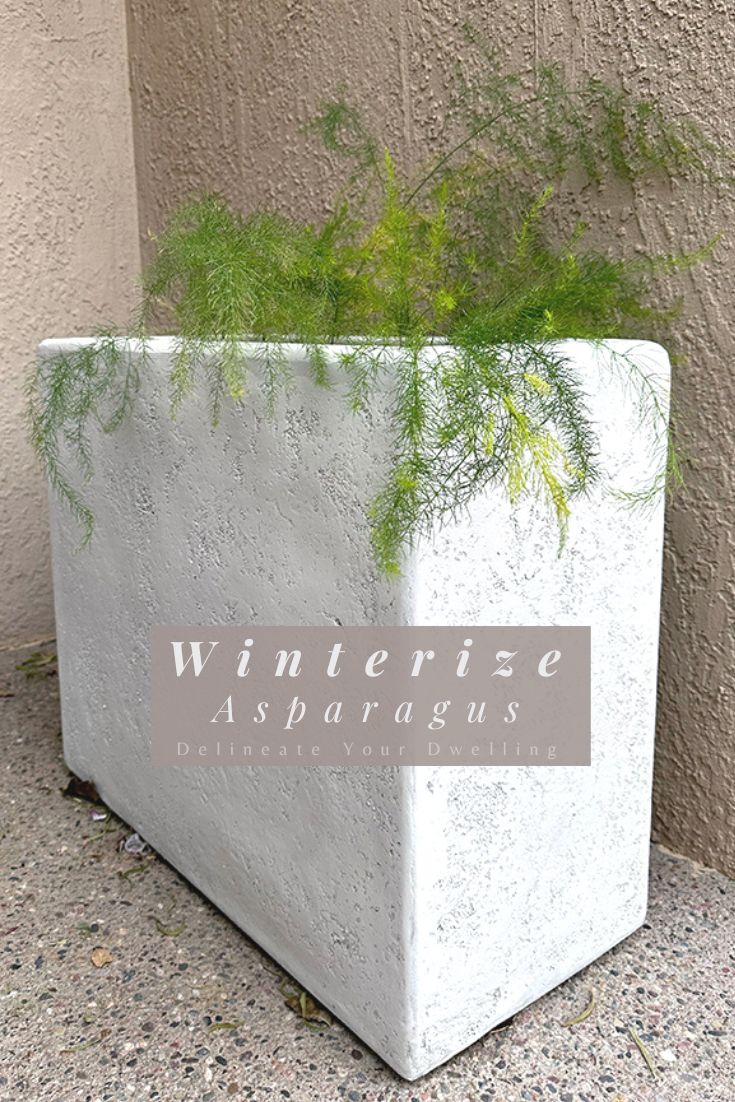
As the weather cools, you will start to see the leaves of asparagus begin to yellow and die back naturally. This usually happens after the first or second hard frost. If you live in a warmer climate, the asparagus may not die back completely. Cut the spear in the late fall anyway.
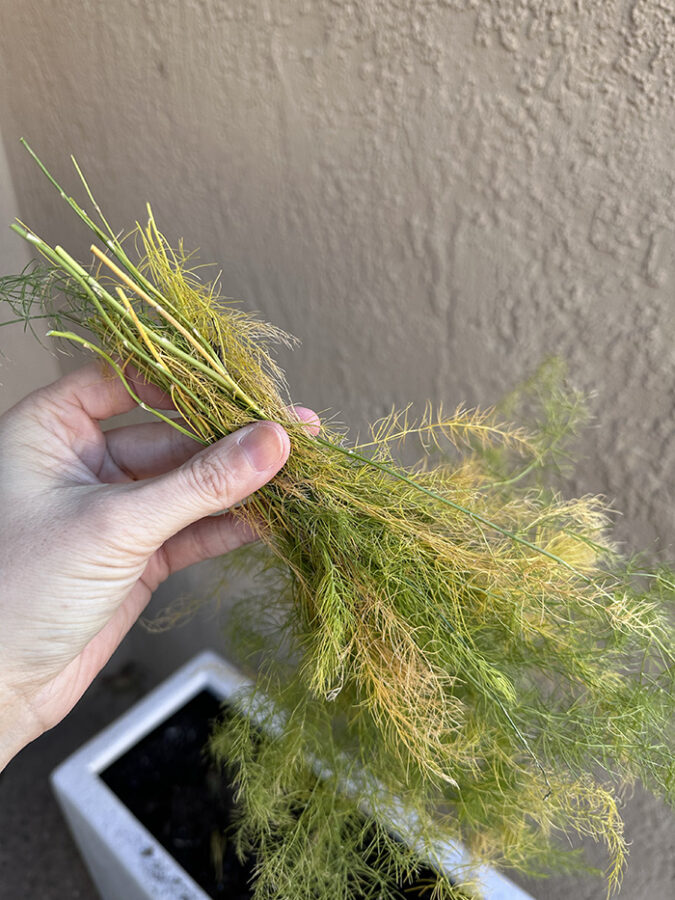
Pull any weeds and cut the the fronds down to a few inches (2-3″) above the surface. Depending on how big and mature your asparagus plants are, you can use either hand pruners, a string trimmer or even a lawn mower for this task.
Mulching the Asparagus Bed with Compost
Now that the fronds have been trimmed down, mulch the asparagus bed with compost, chopped leaves, wood chips, aged manure, pine needles, or straw before freezing weather or snow arrives. The cut fern stubs help hold the mulch over the crowns, providing a good insulating layer against the winter cold.
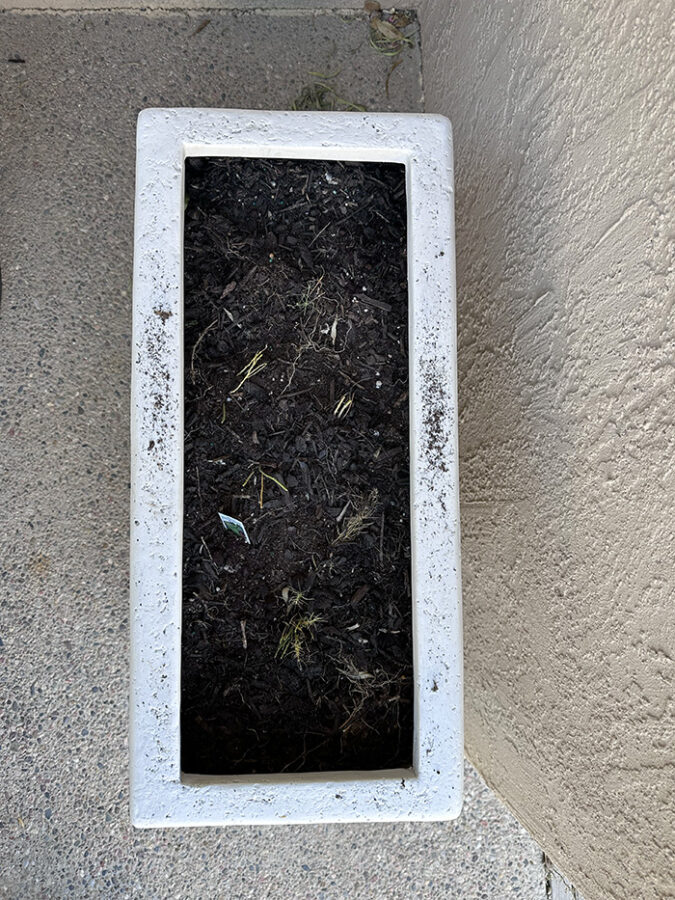
Having healthy crowns are the key to growing asparagus. Mulching also helps fertilize your plant for the next growing season.
Each year the bed does get a little more raised, but it aids with better drainage.
Stop Watering Asparagus
Stop watering the asparagus after you have cut back the stems and mulched overtop. The crowns will go dormant over winter and require no watering or fertilizing during this period.
Remove mulch before Spring
Remove the mulch in early spring before the spears emerge and get ready to enjoy a refreshed happy, healthy Asparagus plant!
If you like gardens, you might like checking out some of these posts too.
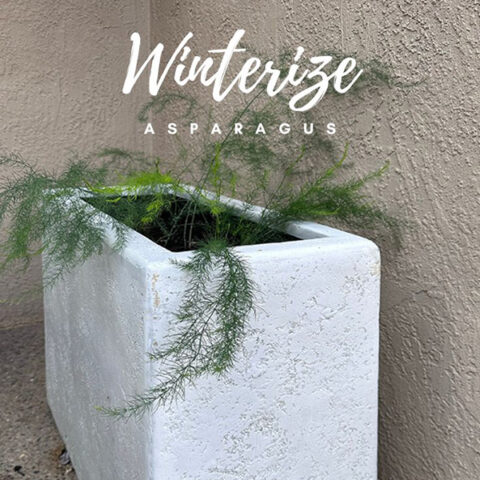
How to Winterize Asparagus
Learn the tips to growing healthy Asparagus plants by taking care of your plant in the winter.
Materials
- Hand Pruners
- Compost
Instructions
- As the weather cools, Asparagus leaves will begin to yellow and die back naturally. This usually happens after the first or second hard frost. If you live in a warmer climate, the asparagus may not die back completely.
- Pull any nearby weeds and cut the the fronds down to a few inches (2-3") above the surface. Depending on how big and mature your asparagus plants are, you can use either hand pruners, a string trimmer or even a lawn mower for this task.
- Mulch the asparagus bed before freezing weather or snow arrives. The cut fern stubs help hold the mulch over the crowns, providing a good insulating layer against the winter cold.
- Stop watering the asparagus after you have cut back the stems and mulched overtop. The crowns will go dormant over winter and require no watering or fertilizing during this period.
- Remove mulch in the early spring before the spears emerge and get ready to enjoy a refreshed happy, healthy Asparagus plant!
Notes
You can mulch using various materials like compost, chopped leaves, wood chips, aged manure, pine needles, or straw.


